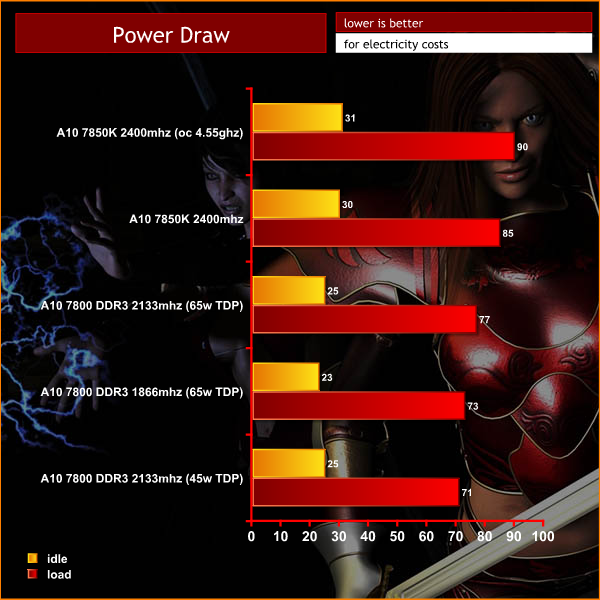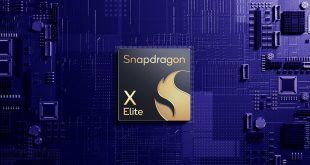We measure power consumption at the socket by using a calibrated meter.

Looking at the power draw figures we see a clear dividing line between the A10-7800 and 7850K. These are figures taken at the mains socket so they include inefficiencies in the power supply as well as the power used by the motherboard, memory, SSD and integrated features such as Ethernet and USB.
The new 7800 ranges from 73W to 79W in 3D Mark and drops to 71W or 72W when the TDP is throttled to 45W. If we assume the 45W TDP is accurate then we have to subtract about 25W from the mains draw figure. This suggests the A10-7800 in 65W mode is actually drawing about 50W.
The reference clocked A10-7850K draws more power and is up to 84W to 86W. If we deduct the same 25W figure for other parts of the system we see that the A10-7850K is drawing about 60W.
By my reckoning that is 45W for the A10-7800 in ‘optimised' mode, 50W in regular mode and the A10-7850K goes up to 60W when overclocked.
I slowed the speed of the Noctua fan to 25 percent in the MSI BIOS and this appeared to do a good job of cooling the APU. The system was certainly very quiet and I was impressed by the behaviour of the system
When I overclocked the A10-7850K using OC Genie the system froze while I was running PC Mark and 3D Mark. Cranking up the CPU fan speed to 50 percent gave the system enough extra cooling to allow it to behave however it did increase the noise to audible levels.
The numbers are irrelevant here – the key point is that A10-7850K requires an appreciable level of cooling while A10-7800 will tolerate a more cavalier approach.
 KitGuru KitGuru.net – Tech News | Hardware News | Hardware Reviews | IOS | Mobile | Gaming | Graphics Cards
KitGuru KitGuru.net – Tech News | Hardware News | Hardware Reviews | IOS | Mobile | Gaming | Graphics Cards


